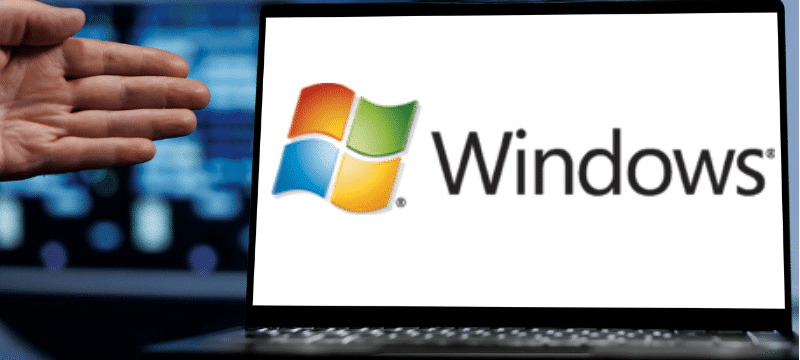7 Must-Have Features for your Windows VPS
Cloud

A Virtual Private Server (VPS) offers businesses a robust and flexible solution, combining the power of dedicated resources with the cost-effectiveness of virtualization. And using Windows on your VPS is one of the easiest and quickest ways to get started with a VPS, especially for those who are already familiar with Windows.
When you’re setting up your Windows VPS, make sure to include these features to get the best performance, the strongest security, and the most value out of your cloud server.
1. Root Access
Simply put, root access is the ability to take any action on the server. Whether the server is hosted on a cloud, dedicated, or virtual private server (VPS), a root user or administrator has complete authority. With this level of authority, you can access and change any file, including those that are essential to the system. You can also execute all server operations by having root access, such as hosting several websites and installing third-party applications. But a root user might also accidentally remove important files and applications, which could have dangerous repercussions.
Root access is required to manage all private servers and to deliver reliable and timely updates. Side note: Not all VPS hosting companies provide complete root access like Kamatera does. This restriction is to ensure that all third-party software is put in the home directory, rather than being immediately compiled as root into the operating system. Having complete root access to the server is essential to be able to unlock your server’s full capabilities.
In the Windows operating system, the root access can be enabled from Accessories > Remote Desktop Connection.
2. Control Panel
Selecting a VPS control panel is the most crucial step, after deciding on a cloud provider for your server. Without them, running a virtual private server would be much more tedious and complicated. Control panels offer a graphical user interface (GUI) that enables you to carry out multiple server management tasks, including developing and maintaining websites, configuring databases, managing email accounts, and keeping an eye on server resources. Best of all, they don’t require extensive command-line experience.
VPS control panels can be classified and ranked based on their functionalities:
- Ease of use
- Features like database management and automatic backups
- Security
- Scalability
- Support and documentation
- Compatibility
Some popular control panel software offerings include cPanel, Plesk, Webmin, and CyberPanel.
3. Scalability/Customizability
Scalability describes the infrastructure’s capacity to adjust in response to traffic changes, resource requirements, and business needs. Your Windows VPS should be flexible enough to adjust to quick changes. Scalability for VPS hosting includes both horizontal (adding more VPS instances) and vertical scaling (upgrading server resources).
With scalable virtual private server (VPS) hosting, companies can grow by adding more CPU, RAM, and/or storage as needed. The performance of websites and applications hosted on VPS servers is directly impacted by scalability. Businesses can increase customer satisfaction and engagement by optimizing website loading times, lowering latency, and delivering faster response times by increasing server resources either vertically, horizontally, or diagonally.
A Windows VPS is also quite configurable. To suit the unique requirements of your company, you can select the WIndows version, software stack, and configuration that is most suitable for you.
4. Security Features
Whatever else your VPS offers you, it’s non-negotiable that your data and applications be protected from unauthorized access and cyber threats. Strong security features, such as firewalls, intrusion detection, and encryption, should be included to shield your data and apps. A Windows VPS will give you more flexibility over security configurations so you can set up particular policies that are suited to your company’s needs.
5. Backup and Disaster Recovery
Some Windows VPS hosting companies provide automated disaster recovery and backup options. This guarantees that your data is frequently backed up and that you can easily restore your system to its former configuration in the event of unanticipated events. Maintaining business continuity lowers the risk of downtime and data loss.
6. Remote Desktop Protocol (RDP) Access
By utilizing a Remote Desktop Protocol (RDP) with your Windows VPS, you can access a dedicated virtual machine remotely with the capabilities of a physical server. Compared to conventional remote desktop solutions, these tools guarantee better speed and security while giving you more control over your tasks.
The recommended tools for using VPS and RDP include regular updates of your VPS, antivirus software, strong passwords, and two-factor authentication. Using user account management, the latest RDP client software and VPNs to maximize RDP access are other recommended practices for keeping your RDP secure.
7. Support for Multiple Domains and Websites
You can host multiple domains and websites on a single server with Windows VPS hosting. Businesses wishing to monitor multiple websites from one single platform will find this advantageous. For digital firms or companies with several websites, it is an ideal solution because it streamlines resource allocation and administration.
Conclusion
Windows VPS hosting is an effective solution that greatly improves the operations of your company. Dedicated resources, affordability, adaptability, and scalability are provided, all while guaranteeing compatibility with Windows-based software. Utilizing Windows VPS hosting’s benefits will help you streamline your online operations and grow your company to new heights.


